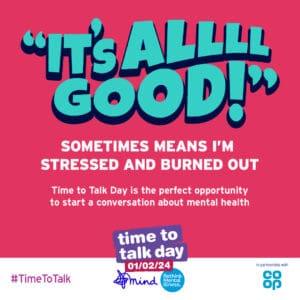Abbie Tomson
Midwife MSc, BSc, Yoga Teacher, Project Lead at All4Birth
@enevlorel @All4Birth
Summary
Planning for pregnancy can be an exciting and daunting time. Whether you are thinking about conceiving for the first time or trying for another child, preparing your body and mind is crucial. This guide will take you through the key timelines and vital focus areas based on evidence-based practices to ensure you are ready for a healthy pregnancy.
Understanding Your Cycle and Timing
Tracking Your Menstrual Cycle
Understanding your menstrual cycle is the first step in planning for pregnancy. Track your cycle for a few months to identify your ovulation period. Ovulation typically occurs about 14 days before your next period starts. This is the most fertile window in which the chances of conception are highest.
Tools for Tracking
Consider using apps, basal body temperature charts, and ovulation prediction kits to help pinpoint your fertile days accurately.
Check out our factsheet ‘Understanding the Basics of Fertility Charting and Temperature Tracking’
Preconception Health Check-Up 1
Before trying to conceive, schedule a visit with your healthcare provider for a preconception check-up. This visit can help identify any health issues that may affect your pregnancy and allow you to manage them proactively. This may not be an option offered in all areas, but these groups should definitely seek healthcare advice before conception:
- Diabetes
- Epilepsy
- Thyroid conditions
- On long-term medication
- Mental health conditions
- Previous gestational diabetes
- Previous pre-eclampsia
- History of unexplained stillbirth
- Known genetic disorders
- Hypertension
Do not stop taking a medication prescribed by a medical professional suddenly, only under the direction of a medical professional
Nutritional Preparation
1. Folic Acid: 2
Folic acid supplements containing 0.4mg a day should be taken for at least 1 month before trying to conceive and throughout the first trimester of pregnancy to reduce the risk of neural tube defects (NTD) such as spina bifida, for women with an increased risk of NTD a dose of 5mg a day is recommended. That includes women with a family history of NTD, those with a BMI over 30, those with diabetes, or those taking anti-seizure medications.
2. Balanced Diet: 3
Adopt a nutritious diet rich in vitamins, minerals, and fibre. Focus on a variety of fruits, vegetables, whole grains, and lean proteins. Limit intake of caffeine and avoid alcohol. For an in-depth book on fertility nutrition check out our review of ‘Real Food For Fertility’ by Lily Nichols
3. Maintain a Healthy Weight: 4
Being overweight reduces your chance of becoming pregnant, and then once pregnant it can increase your chances of pregnancy complications for both you and your baby. Taking active steps to lose weight with dietary or exercise modifications (and possibly considering bariatric surgery if appropriate) before pregnancy is recommended.
Lifestyle Adjustments
1. Eliminate Toxins: 5, 6
Smoking during pregnancy increases the risk of miscarriage, congenital abnormalities, premature birth, stillbirth, SIDS and chronic diseases such as asthma for the baby. The same is true for women who breathe in ‘second-hand smoke’. Quitting is the best thing you and your partner can do for you and your baby’s health. E-cigarettes and Vaping may not be a safer alternative as this industry is still quite unregulated and many hazardous chemicals have been found in e-cigarettes. Counselling, nicotine patches and telephone support services are effective in reducing smoking.
There is no known safe level of alcohol, cannabis, or other recreational drugs during pregnancy so the advice is to avoid them altogether.
Read more on our Factsheet ‘The Importance of Quitting Smoking Before Conception: Benefits and Resources’
2. Manage Stress:
High stress levels can affect your ability to conceive. Chronic stress can lead to the overproduction of stress hormones such as cortisol and adrenaline. High levels of cortisol can interfere with the normal functioning of the hypothalamus-pituitary-gonadal (HPG) axis, which regulates reproductive hormones like oestrogen, progesterone, and testosterone. Disruptions in these hormones can affect ovulation in women and sperm production in men.
A study by Lynch et al. (2014) 7 found that higher levels of stress biomarkers were associated with a reduced probability of conception in women. The researchers measured alpha-amylase, an enzyme linked to the stress response, and found that women with higher levels had a significantly lower chance of becoming pregnant.
Practices such as yoga, meditation, and deep-breathing exercises have been shown to reduce stress and improve fertility outcomes. A randomized controlled trial 8 found that women who participated in a mind-body program had significantly higher pregnancy rates compared to those who did not.
Understanding Fertility Challenges
1. Be Aware of Age-Related Fertility Changes:
Fertility naturally declines with age, especially after 35 for women and increasingly after 40 for men. Women are born with a finite number of eggs, and this reserve decreases with age. By puberty, the number of eggs drops to about 300,000 to 400,000, and only around 400 will ovulate during a woman’s reproductive years. The decline accelerates in the 30s, particularly after age 35. By age 40, the chances of natural conception drop significantly.
Research shows that the rate of decline in ovarian reserve and quality of eggs increases as women age. According to the American Society for Reproductive Medicine (ASRM), fertility declines gradually in the early 30s, then more rapidly after age 35. 9
2. When to Seek Help:
If you are under 35 and have not conceived after one year of trying, or over 35 and have not conceived after six months, consult a fertility specialist
Partners Role
1. Involvement is Key:
When preparing to conceive, the involvement of both partners is crucial for maximizing the chances of a healthy pregnancy. While much focus is often placed on the woman’s health, the male partner’s health is equally important. Encouraging your partner to actively participate in the planning process can create a supportive environment and improve overall fertility.
A study by Janevic et al. (2014) 10 found that men with higher perceived stress levels had lower sperm concentration, motility, and morphology quality compared to men with lower stress levels .
Research by Ramlau-Hansen et al. (2007) 11 found that men who smoked had significantly lower sperm counts and motility compared to non-smokers.
2. Support Each Other:
Emotional support is crucial. Maintain open communication and support each other’s health and well-being as you prepare for pregnancy. Effective communication helps in sharing concerns, fears, and hopes. It allows both partners to feel understood and supported, reducing stress and fostering a stronger emotional connection. A study by 12 emphasises that open communication between partners is associated with better emotional well-being and reduced stress levels during the conception period.
Conclusion
Preparing for pregnancy is a journey that involves both physical and emotional preparation. By understanding your menstrual cycle, improving your health, making lifestyle adjustments, and planning with your partner, you are laying the groundwork for a healthy pregnancy. Remember, each couple’s journey to conception is unique, and seeking personalized advice from healthcare professionals is always recommended.
Feel free to share your own experiences or tips in the comments below. Your insights could provide great support and inspiration to others embarking on their journey to parenthood!
Links to other resources
 Books
Books
Brain Health from Birth: Nurturing Brain Development During Pregnancy and the First Year by Rebecca Fett
Real Food for Pregnancy by Lily Nichols
Functional Maternity: Using Functional Medicine and Nutrition to Improve Pregnancy and Childbirth Outcomes by Sarah Thompson
 Film Audio and Apps
Film Audio and Apps
Baby Buddy app, created by the Best Beginnings Charity
 Websites
Websites
The Lancet | Preconception Health
References
- Pre-Pregnancy Counselling Guidelines. [Online] RANZCOG. [Cited: 26 March 2023.] https://ranzcog.edu.au/wp-content/uploads/2022/05/Pre-pregnancy-Counselling-C-Obs-3a-Board-approved_March-2022.pdf.
- Yoon, P., Rasmussen, S., Lynberg, M., Moore, C., Anderka, M., Carmichael, S., Costa, P., Druschel, C., Hobbs, C., Romitti, P., Langlois, P. and Edmonds, L., 2001. The National Birth Defects Prevention Study. Public Health Reports, [online] 116(1_suppl), pp.32-40. Available at: <https://pubmed.ncbi.nlm.nih.gov/11889273/>
- real food for fertility
- Management of Obesity in Pregnancy Guidelines. [Online] RANZCOG. [Cited: 26 March 2023.] https://ranzcog.edu.au/wp-content/uploads/2022/05/Management-of-Obesity-in-Pregnancy.pdf.
- E-Cigarettes and Teens; What You Need to Know. [Online] QUIT. [Cited: 26 March 2023.] https://www.quit.org.au/articles/teenvaping/.
- Substance Use in Pregnancy Guidelines. [Online] RANZCOG. [Cited: 26 March 2023.] https://ranzcog.edu.au/wp-content/uploads/2022/05/Substance-use-in-pregnancy.pdf.
- Lynch, C. D., Sundaram, R., Maisog, J. M., Sweeney, A. M., & Buck Louis, G. M. (2014). Preconception stress increases the risk of infertility: results from a couple-based prospective cohort study–the LIFE study. Human reproduction (Oxford, England), 29(5), 1067–1075. https://doi.org/10.1093/humrep/deu032
- Domar, A. D., Rooney, K. L., Wiegand, B., Orav, E. J., Alper, M. M., Berger, B. M., & Nikolovski, J. (2011). Impact of a group mind/body intervention on pregnancy rates in IVF patients. Fertility and sterility, 95(7), 2269–2273. https://doi.org/10.1016/j.fertnstert.2011.03.046
- American Society for Reproductive Medicine (ASRM). “Age and Fertility: A Guide for Patients.”
- Janevic, T., Kahn, L. G., Landsbergis, P., Cirillo, P. M., Cohn, B. A., Liu, X., & Factor-Litvak, P. (2014). Effects of work and life stress on semen quality. Fertility and sterility, 102(2), 530–538. https://doi.org/10.1016/j.fertnstert.2014.04.021
- Ramlau-Hansen, C. H., Thulstrup, A. M., Aggerholm, A. S., Jensen, M. S., Toft, G., & Bonde, J. P. (2007). Is smoking a risk factor for decreased semen quality? A cross-sectional analysis. Human reproduction (Oxford, England), 22(1), 188–196. https://doi.org/10.1093/humrep/del364
- Pasch, L. A., & Sullivan, K. T. (2017). Stress and coping in couples facing infertility. Current opinion in psychology, 13, 131–135. https://doi.org/10.1016/j.copsyc.2016.07.004













